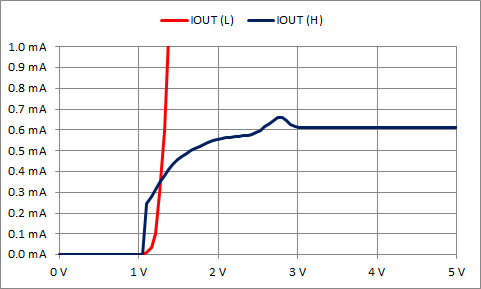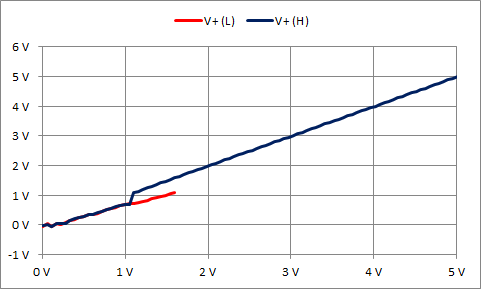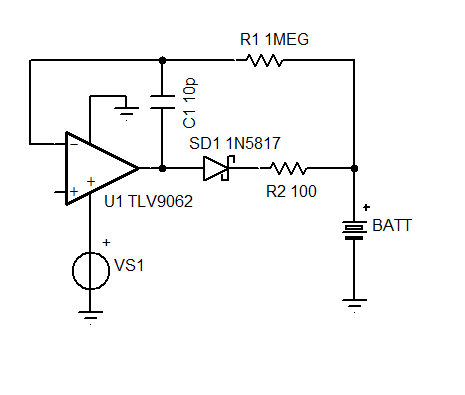Other Parts Discussed in Thread: TLV9062
In my watch project, I use TLV9061 as a supplementary charging device. But there are some questions I want to confirm: 1. In the case of V + suspension and V - grounding, what is the state of Vout port and whether it is in high resistance state? For example, if Vout is connected to the battery voltage, will there be leakage current in this state, and is there a risk of burning down the device?
2、In the working state, if the Vout voltage is less than V+, the short circuit current is 50 mA. If the maximum output current is reached, will the chip protect and turn off the output? Or will it lower the voltage? Can the battery charge function be realized?




